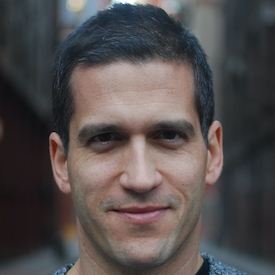Dan Wang is a research fellow at the Hoover History Lab at Stanford University. He was previously a fellow at the Yale Law School’s Paul Tsai China Center and the technology analyst at Gavekal Dragonomics. Dan has published essays in The New York Times, Foreign Affairs, Financial Times, New York Magazine, and The Atlantic.
What’s the big idea?
Breakneck is about six years of living in China, from 2017 to 2023, a time when the U.S. and China have become mostly disagreeable with each other over all sorts of issues. This experience revealed the need for a new framework for thinking about this fraught international relationship. The best way to reframe the tension between how these two nations approach things is that America is a little bit too lawyerly, and China thinks engineering can solve everything.
Below, Dan shares five key insights from his new book, Breakneck: China’s Quest to Engineer the Future. Listen to the audio version—read by Dan himself—below, or in the Next Big Idea App.

1. China is an engineering state.
What does it mean to be an engineering state? At various points in China’s recent past, the entire senior leadership of the Communist Party has held degrees in engineering. These people were mechanical engineers, hydraulic engineers, and geologists. More than just communist, socialist, or authoritarian, we can understand China through the idea of the engineering state.
What do engineers like to do? Engineers like to build: bridges, highways, coal plants, homes, and all these things that are abundant in China. China treats building as the solution to every problem. Whenever the economy is weak or there is some sort of geopolitical tension, the Chinese government announces a new infrastructure program.
2. The U.S. is a lawyerly society.
In contrast, the United States is a lawyerly society because much of America is run by lawyers. If you look at recent U.S. presidents, five of the last 10 went to law school. About half to two-thirds of the U.S. Congress have degrees in law, while only a handful have any degrees in STEM or engineering. Even looking back to the nation’s founding, the U.S. was established by lawyers. The Declaration of Independence reads like a legal document. Of the first 16 U.S. presidents, all but three had practiced law. Now, what are lawyers really good at? For the most part, they’re good at stopping things.
“Part of the problems within the U.S. today is that there’s a shortage of important infrastructure.”
Lawyers are good at saying, No, we cannot build the highway, dam, or nuclear plant. They often have good reasons, like environmental protection, but not always. Part of the problems within the U.S. today is that there’s a shortage of important infrastructure. There is a shortage of homes, causing skyrocketing rents. We have a shortage of mass transit, making it difficult for people to take something like the subway or bus to get to work. There have also been shortages of manufacturing products, causing a high inflation rate.
The central contrast between the U.S. and China is this framing of the lawyerly society and the engineering state. This dichotomy explains a lot of our present problems.
3. Old labels have lost their power.
The disagreeable relationship between the U.S. and China shouldn’t be reasoned through using 20th-century labels, like socialist, capitalist, authoritarian, or neoliberal. These aren’t interesting words anymore. That’s part of why I came up with the new framework of engineering state and lawyerly society.
The engineering state explains a lot of the present moment in terms of what China is doing. China is building a lot of things, which is making its consumer sector weaker than it needs to be. Part of the problems of the world today is that China makes too many goods. The consumers at home don’t need all these goods, and so China must export copiously.
“Rather than fighting back with a clever legal rebuttal of Trump’s tariffs, Beijing has decided to build other things instead.”
That is creating friction with trading partners, including President Donald Trump. As part of the strategy to deal with China’s economic might, the U.S. has employed tariffs and other legal measures in an attempt to constrain China’s growth in the technology sector. Rather than fighting back with a clever legal rebuttal of Trump’s tariffs, Beijing has decided to build other things instead.
Part of the reason President Trump backed down on some of his tariffs is that China controls many critical industries in technological goods, such as rare earth magnets, and could suspend those exports in retaliation. Trump backed down, in part, because China is building too many things.
4. People are not building materials or math equations.
China has well-built cities that are highly functional and connected to each other through a system of very reliable, high-speed rails. But China is made up not only of physical engineers, but also—substantially—of social engineers. Some of the problems in China are a result of being ruled by a bunch of engineers who treat the population like another building material, as if people can be molded or torn down at will.
In 1980, China began the One-Child Policy. It restricted families from having more than one child, in most cases. This sort of policy couldn’t have been accomplished without coercive means, namely, through mass sterilizations and hundreds of millions of forced abortions. Something like the One-Child Policy could only be conceived and implemented by a country that is mostly governed by engineers.
Social engineering can also lead to something like Zero-COVID, which I lived through for all three years of its implementation in China. Zero-COVID did help make life fairly normal in many places for the first two years of the pandemic. But the problem was that Zero-COVID also led to broad misery when the transmissible strain of the virus forced China’s largest city, Shanghai, to lock down for about eight weeks. This eight-week lockdown consisted of people being mostly unable to leave their homes for its duration. People could go outside only to get swabbed and tested by the government. Many people felt food insecure because the government wasn’t delivering sufficient food.
“Something like the One-Child Policy could only be conceived and implemented by a country that is mostly governed by engineers.”
It leads to problems when the Chinese government can look at the population and decide that it has almost total discretion about what to do with them. Well-functioning cities with great mass transit are wonderful, but the Chinese government also treats society like a math exercise.
5. Legal protections can stymie infrastructure and manufacturing.
Parts of the problem in America today include a housing shortage, a mass transit shortage, and a shortage of consumer goods. Lawyers have thrown up too many procedures that make it unreasonably expensive to build things like high-speed rails or subway systems. The U.S. can learn to be a little bit more like an engineering state so that it can build important infrastructure. I am hopeful because the U.S. has done this before. The U.S. has built many beautiful cities, numerous roads and highways, transcontinental railroads, and canals, but most of that development stopped in the second half of the 20th century when lawyers took over again.
It would be wonderful if America could be a little bit more of an engineering state. And it would be wonderful if China could be a little bit of a lawyerly society. I would love it if China were more interested in protecting the legal rights of its citizens. The world would be a lot better if the U.S. and China took a page from each other’s books.
Enjoy our full library of Book Bites—read by the authors!—in the Next Big Idea App:
































